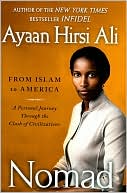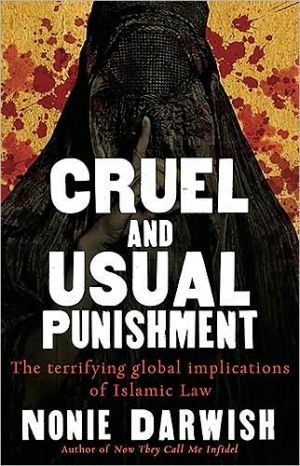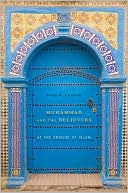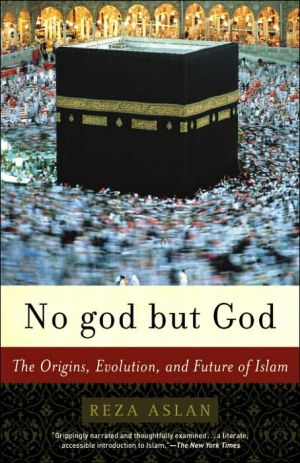Muhajababes: Meet the New Middle East--Young, Sexy, and Devout
Two thirds of the population in the Middle East is under 25 years old, and there's been an explosive growth of college graduates. Still, there aren't enough jobs to go round. They're having a collective quarter-life crisis. In the months before turning 25 herself, BBC producer Allegra Stratton set out to meet them.\ She visits Beirut, Amman, Cairo, Dubai, Kuwait City and Damascus during a time of potentially momentous change, looking for youth culture as we know it. She sits in on auditions...
Search in google:
Two thirds of the population in the Middle East is under 25 years old, and there's been an explosive growth of college graduates. Still, there aren't enough jobs to go round. They're having a collective quarter-life crisis. In the months before turning 25 herself, BBC producer Allegra Stratton set out to meet them.She visits Beirut, Amman, Cairo, Dubai, Kuwait City and Damascus during a time of potentially momentous change, looking for youth culture as we know it. She sits in on auditions for the Lebanese version of American Idol and tries to get into a men-only Starbucks in Egypt. She interviews pop stars and filmmakers and djs, visits the gay community, and meets the region's most famous single mother. Along the way she discovers a massive video industry of airbrushed, heavily produced, scantily clad singers that hold the affections of young Arabs. And all of them - members of the Muslim Brotherhood and of sports clubs alike - talk of the same Islamic revival. Yet there's a contradiction. Many of the fans of these semi-naked popstrels are also extremely devout. 'Muhajabah' means one who veils. So what to call the veiled women Stratton encounters who strive for sexiness by lavishing what's left unveiled - face and feet - with make-up, jewelry, and killer shoes? Muhajababes, and they may represent the Islamic Middle East in a refreshingly surprising way. Publishers Weekly Two-thirds of the Middle East-a quarter of a billion people-are 25 or younger, a demographic as large as it is unrepresented in Western media. With aplomb and scads of self-deprecating wit, journalist Stratton, herself 25 years old and a self-professed naïf about the Arab and Muslim world, plunges into youth culture in Syria, Jordan, Egypt, Lebanon and Kuwait. Her findings are epitomized by the book's title; the term muhajababes (coined by one of Stratton's interviewees) describe veiled young women who combine traditional piety with a secular sensibility, wearing tight jeans with their head scarves and following pop stars and religious leaders with equal devotion. "My methodology was to talk to everyone... who seemed my age," Stratton writes, including men and women, religious visionaries and artists, revolutionaries and small-business owners. In visiting pockets of the Middle East seldom seen in the Western media (a Kuwaiti student union, a Damascus newspaper), she skillfully renders the frequently downplayed differences between the countries and their shared effort to integrate centuries of history with an avalanche of modern influences. The book's lacunae are not unimportant-Stratton doesn't step beyond urban population centers or speak with any local experts who might have helped analyze the tumble of information-but her genuine and frankly affectionate engagement makes Muhajababes an entertaining addition to the shelf of anyone hoping to actually understand, rather than stereotype, Arabs and Muslims . (July 1)Copyright © Reed Business Information, a division of Reed Elsevier Inc. All rights reserved.
Introduction 7Requiem for Zen 15Generation Returned 31Wasta 41Virgin in Beirut 51Arab Alex 65Hizbollah Acne 79Palestinian Red Bull 89Badly Drawn Girls 101Designing the Revolution 111'I Need a Right' 123The Cairene Sensei 133The New Eve 145The Problem With Being Rewish 157Daddy Comes Home 173I Killed the Song 183Gezzing 197Fulla Pink 207The Muslim Fight Club 219Epilogue 237Afterword 253Acknowledgments 263
\ Publishers WeeklyTwo-thirds of the Middle East-a quarter of a billion people-are 25 or younger, a demographic as large as it is unrepresented in Western media. With aplomb and scads of self-deprecating wit, journalist Stratton, herself 25 years old and a self-professed naïf about the Arab and Muslim world, plunges into youth culture in Syria, Jordan, Egypt, Lebanon and Kuwait. Her findings are epitomized by the book's title; the term muhajababes (coined by one of Stratton's interviewees) describe veiled young women who combine traditional piety with a secular sensibility, wearing tight jeans with their head scarves and following pop stars and religious leaders with equal devotion. "My methodology was to talk to everyone... who seemed my age," Stratton writes, including men and women, religious visionaries and artists, revolutionaries and small-business owners. In visiting pockets of the Middle East seldom seen in the Western media (a Kuwaiti student union, a Damascus newspaper), she skillfully renders the frequently downplayed differences between the countries and their shared effort to integrate centuries of history with an avalanche of modern influences. The book's lacunae are not unimportant-Stratton doesn't step beyond urban population centers or speak with any local experts who might have helped analyze the tumble of information-but her genuine and frankly affectionate engagement makes Muhajababes an entertaining addition to the shelf of anyone hoping to actually understand, rather than stereotype, Arabs and Muslims . (July 1)\ Copyright © Reed Business Information, a division of Reed Elsevier Inc. All rights reserved.\ \ \ \ \ Kirkus ReviewsBBC producer Stratton looks at demographic and cultural trends in the Arab world, and by her account things are just going to get stranger. Throughout the Middle East, writes the author, are legions of young unemployed men who pass the day, it seems, kicking pebbles around in the dirt. Called hayateen, "men who lean against walls," they have little else to do. Given that there are a quarter-billion young Arabs, and given that major civil unrest seems always to accompany a large number of young people in any given society (think of the '60s), and given that American policymakers seem not to have studied this demographic fact before invading Iraq-well, the future looks bright for anyone who knows how to wire an IED. Meanwhile, young Arab women are increasingly fashion-conscious and media-savvy, even as they retain most of the traditional pieties. By Stratton's account, these shining youth haunt the tonier nightclubs of Beirut and Cairo, listen to underground rock bands in Damascus, work in advertising and television and spend a lot of time discussing how to accessorize with a veil, since veiling, as one young woman tells her, "is now-how you say?-trendy." Many of these young people have no conceptual difficulty voting for or otherwise supporting fundamentalist groups such as the Muslim Brotherhood in Jordan or Hezbollah in Lebanon-one says to Stratton, "I mean, the thing is, really, maybe it is religion that's going to save this region." He does not elaborate what the region is to be saved from, and Stratton doesn't really press the point. While her report is eye-catching, it has the depth of a TV spot. There's lots of colorful description here, but not much analysis, making this goodbackground for someone inclined to think a little more pointedly about what these trends mean for the rest of the world. Still, there's plenty to ponder here in the matter of how youngsters reconcile devoutness and the sowing of wild oats.\ \








